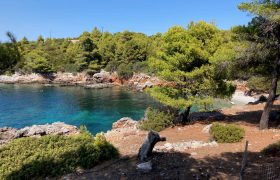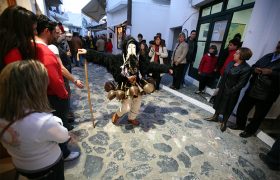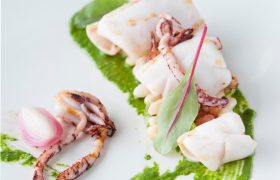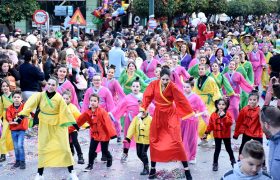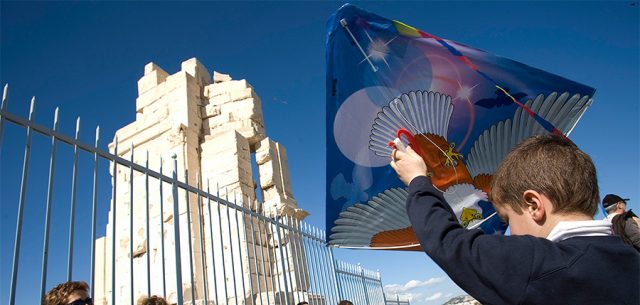Behind the Scenes at the Rethymnon Carnival
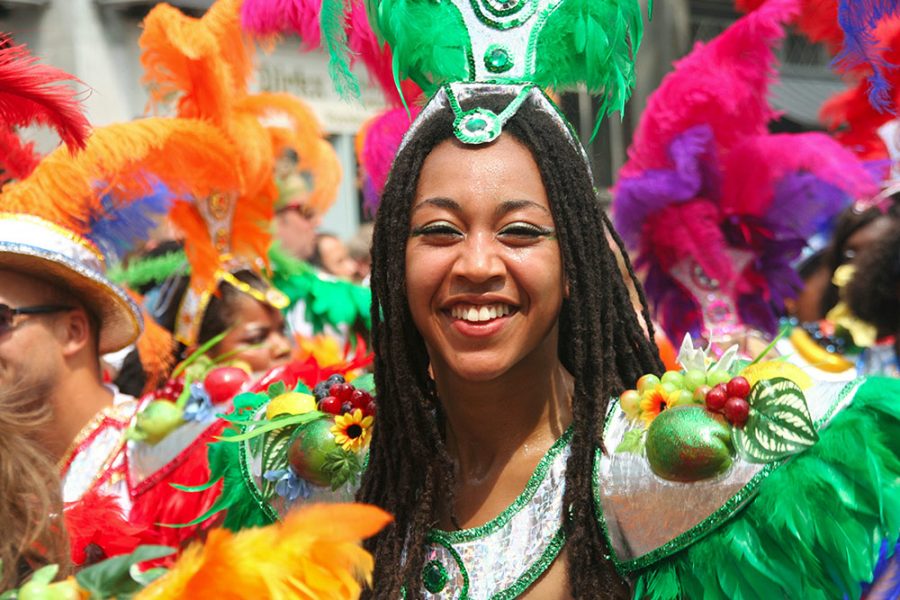
The joy and pageantry of Grand Parade in Rethymnon
In these colourful extracts from her photo journal, archeologist Holley Martlew goes behind the scenes to capture the pageantry, tireless preparations and deep community bonds at one of Greece’s most epic annual carnival rituals.
‘Carnival in Rethymnon‘, I had been told, is special. It shares a few things, like its huge parade, with other carnival cities like Venice, but in many other ways, it is unique – and by far the most important time of year for Rethymniots of all ages.
Rethymnon, an enchanting and history-loaded hub on the northern coast of Crete, has celebrated Carnival for more than 100 years. A Rethymniot called Eve uncovered a document in the town archive dated 1880, which mentions Carnival. Even during the dictatorship Rethymniots celebrated Carnival, which meant a lot to anyone who understood what life was like for Greeks during those dark days. 1993 was the first year there was a big parade.
I have visited Rethymnon in February many times, mainly for field surveys. I’ve seen huge statues of fantastical beasts, real beasts but outsize ones – a larger than life giraffe contorting itself in dramatic positions – 18th century carriages and hilarious clowns, clusters of giant mushrooms set up in plateas and at roundabouts.
But it was only last year when my work turned to the publication of the Late Minoan III Necropolis of Armenoi, during the last Apokries period, that I had time to spare, and to investigate what ‘Carnival in Rethymnon’ was all about.
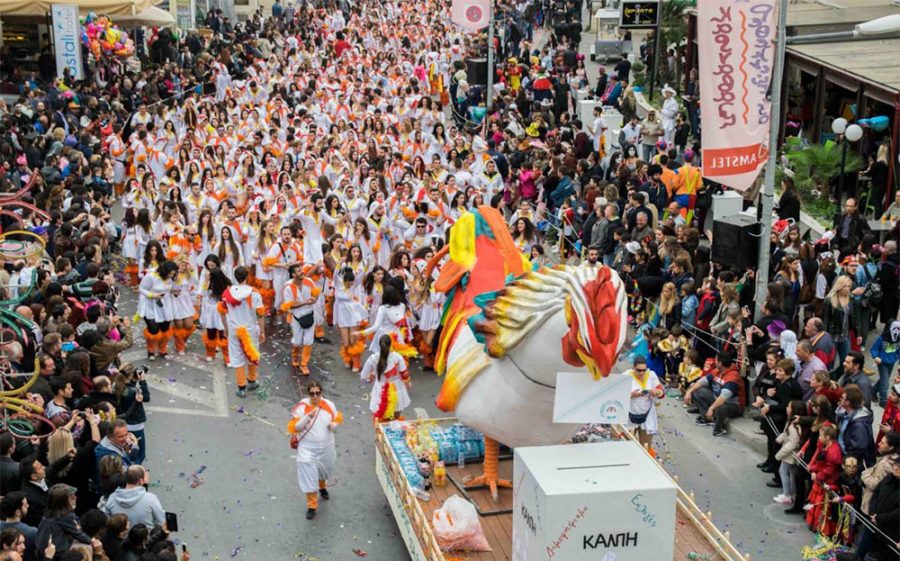
Float teams of up to 600 members join the Grand Parade
I had no idea what a Pandora’s box I was about to open. What jumped out of the Rethymnon box of tricks changed my idea of the town and its inhabitants totally. What fun they have made their Carnival, a frolic with real flair, but it is also a ritual with a serious side. The more I learned, the more I realised how true the statement was, that ‘Carnival in Rethymnon’ is indeed like no other.
Rethymnon is a member of the FECC, the Federation of European and Latin American Carnival Cities (which has 24 members in total).The town has its own tireless carnival committee of five whose main goal is to ensure that Rethymniots (and Carnival visitors) have fun on a grand scale and in many and varied ways. Every day and every night during the three-weeks of Apokries, they ensure that there is something going on.
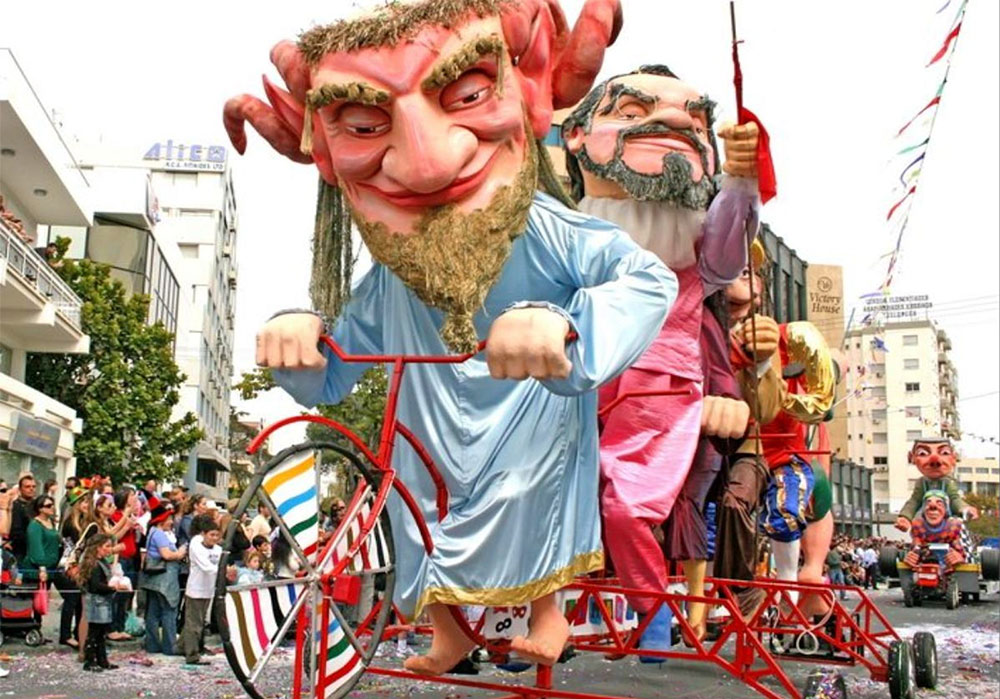 One week, for example, is devoted to music and dance and includes musical strolls. When Deputy Mayor of Rethymnon, Pepi Birliraki told me that musicians would walk around town playing Cretan instruments, the lyre and the mandolin, I was entranced. I closed my eyes and saw and heard them, and then one night a week later my dream came true.
One week, for example, is devoted to music and dance and includes musical strolls. When Deputy Mayor of Rethymnon, Pepi Birliraki told me that musicians would walk around town playing Cretan instruments, the lyre and the mandolin, I was entranced. I closed my eyes and saw and heard them, and then one night a week later my dream came true.
I was delighted when I heard the sound of lyra pierce the air as I walked slowly down the promenade by the sea.
There were Carnival bicycle routes where participants dress in costume. There were seminars for mask-making, make-up and costume production. Large numbers of people toiling together to build floats in warehouses on the edge of town. A theatre night when Treasure Hunt teams present a play or a film explaining their themes. Being Greek, cooking for all the participants for all these evening events is very important too. No Greek must go hungry. The Carnival cooks would see to that.
All these activities lead up to the Grand Finale which takes place on the last Sunday before Lent. This is the Carnival Parade. In 2017, the town welcomed 1500+ visitors for the last 3 days of Carnival. Hotels, closed for the winter, re-open, including hotels outside as far away as Chania, and private homes take guests. In this way the whole area benefits outside the official tourist season.
Inside the extraordinary atelier of Taxis Chasikos
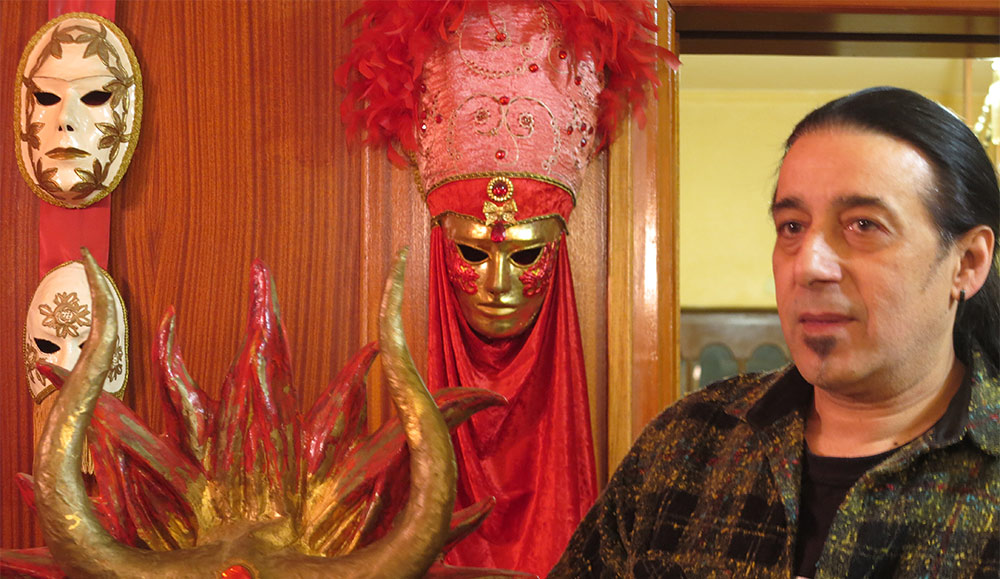
Costume maestro Taxis Chasikos in his atelier
Takis Chasikos has been the top designer in Rethymnon for a very long time, and since 1993 has devoted the first two months of each year to designing and making costumes for two main floats for the Carnival Parade. The themes are top secret until “The Day”. The minute I enter his workshop, he swears me to secrecy about this year’s theme.
Takis tells me there are 36 individual groups in the town in the throes of preparing costumes and floats. The members numbered from 100 to 400 and one team has 600 members!
Once inside the studio I am immediately handed a glass of warm rakimelo (raki with honey — delicious). Trays of finger food, savoury and sweet, appear on the table in front of me. I walk to the far end of the room and peer through large windows down into a sub-basement. Three women sit at a table making… what? Horns. Curved horns of goats. They were copying the real skull and horns of a male goat. Amazing.
The theme is “Fallen Angels”, a non-religious interpretation of a myth done for fun and designed to be carried out as a theatrical performance during the Parade. The story goes that someone has betrayed a good fairy and cut off her horns and wings so that she loses her power.
When I finish my glass it is quickly filled up again, and I eat three (small!) slices of walnut cake while I am given a fashion show. Afterwards we enter a workroom where there are people beavering away – not just here – but on all 3 floors of the building. One hundred people cutting, painting, sewing, and of course, being Greek — eating.
Giant wings are laid out on a table in one room. I touch a ‘feather’ to find it is made out of black foam. It is as soft as down.
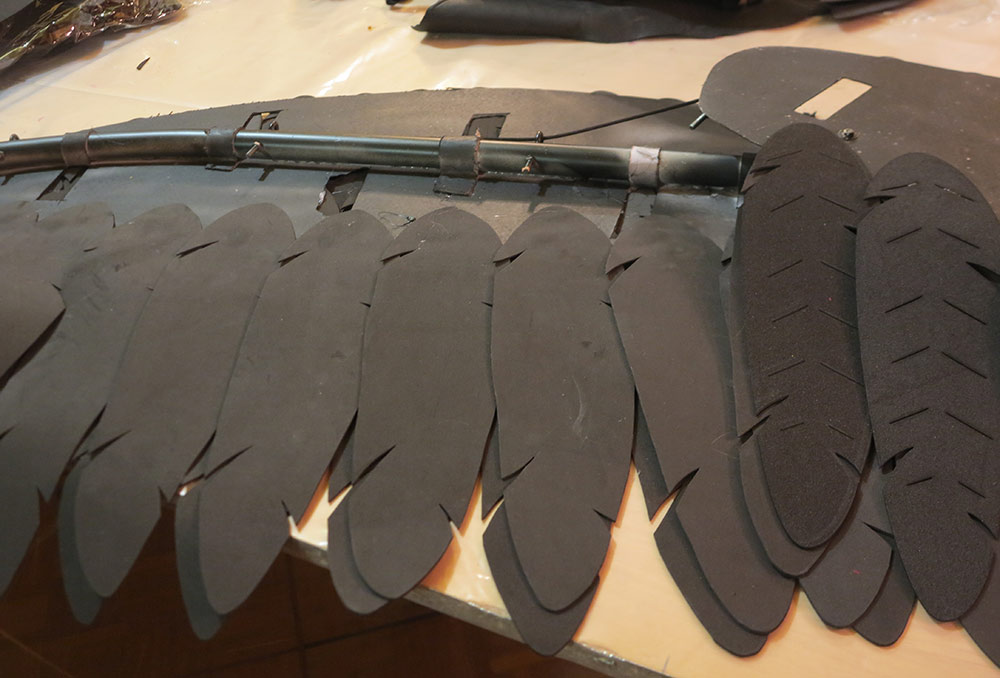
2,500 metres of black foam were needed to make these float feathers
Takis explains that he sources what he needs for his designs from all over Greece. Everything is donated by individuals or companies whom he approaches. All the work on the costumes is executed by hand by members of the team. Without donations of materials and time, to produce such works of art would be impossible. The skeletons for the wings in front of me are made out of used bamboo canes that have been painted black. It will take 2,500 metres of foam to make all the feathers they need. They will also need ostrich feathers and the town of Seres has given them 1,500. Ten years ago, when their theme was a garden, they made 4,500 roses for the float!
Takis takes me upstairs to see his collection of masks and costumes from previous years. The room is full of the most fabulous costumes, costumes past and 2017 costumes in production. Every one is beautiful. But what astonishes me is the detail. The embroidery is exquisite. Each costume and each mask are works of art; so imaginative and perfect that to me, each one, is near-priceless. Just like Venice, I was tempted to say and then thought better of it. Takis Chasikos of Rethymnon could take on any costume designer in Venice and give him a run for his money.
Feasts and floats
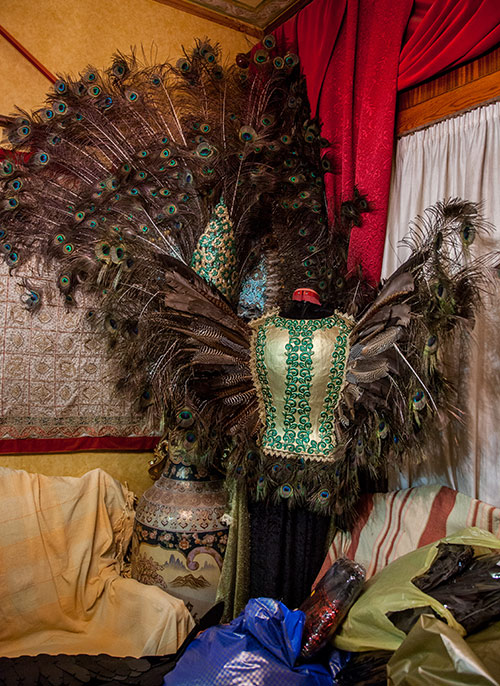
Craftsmanship worthy of the Venice Carnival
From Takis’ atelier we visit a warehouse on the outskirts of town where the float makers are at work. It’s late, but Greeks party late and they work late; a national habit imbedded in their psyches since childhood, when as babes in arms, they linger at tavernas well into the night.
In front of the warehouse is a barbecue. Men tended their chops. Smoke wafted into the night. I couldn’t resist the sights and smells. Armed with a big pork chop on a paper plate I go inside to be confronted by an enormous papier-mâché man, no ordinary man but a true Cretan with outsize black moustache. All kinds of things are being made — a skull with gold and white teeth, big black eye sockets, sporting a hat and smoking a big cigar; Superman; space creatures; clowns — many witty and funny things — but some also very beautiful.
The crews are given 2 weeks to make their floats and of course most of the work has to take place after hours when the working day is over. The warehouse we visited was merely one of many.
Costumes. Floats. The enormity of preparing for carnival each year begins to overwhelm me, but also the dedication of the town and the fantastic fun they are clearly having.
Fun Fact
Rethymnon earned its place in the Guinness Book of World Records. On February 12, 2017, 1384 people competed in the 28th Treasure hunt Game of Rethymno, eclipsing the previous record holder, The University of Newcastle (England) who had 1001 participants. Each year the town of Rethymno holds a treasure hunt during Carnival and the prize is the honour of organising the next year’s treasure hunt.
Visit rethymnocarnival.gr for more information.
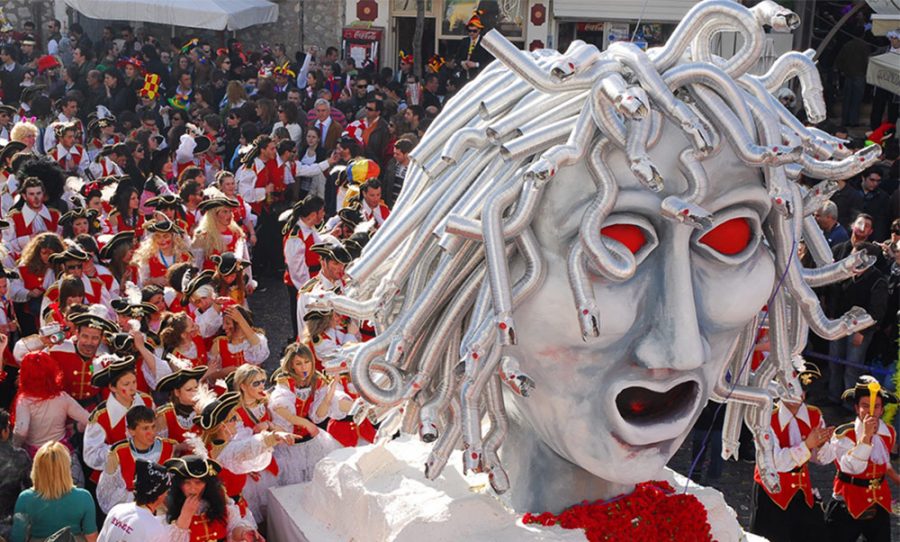
Fantastic beasts and where to find them

